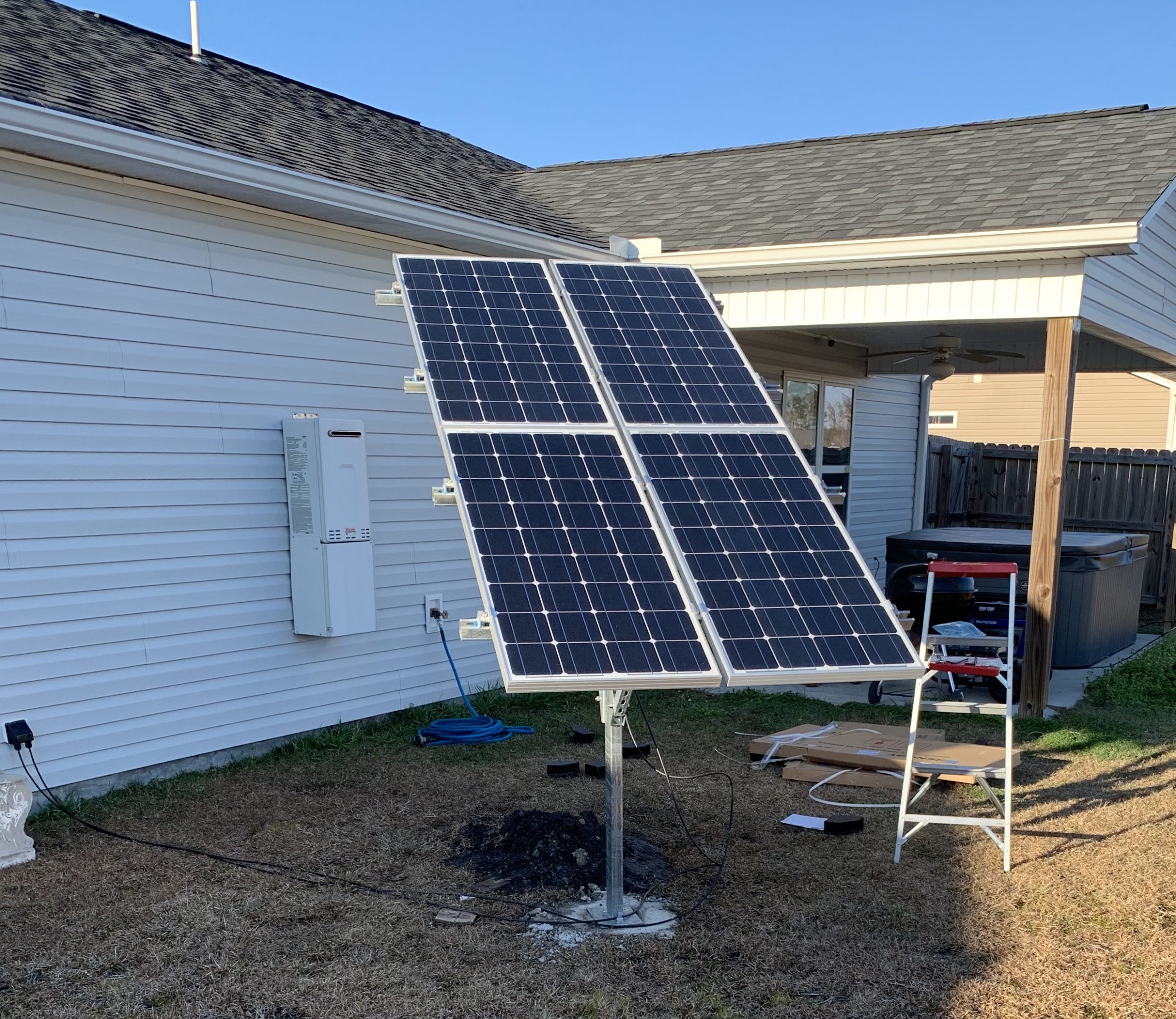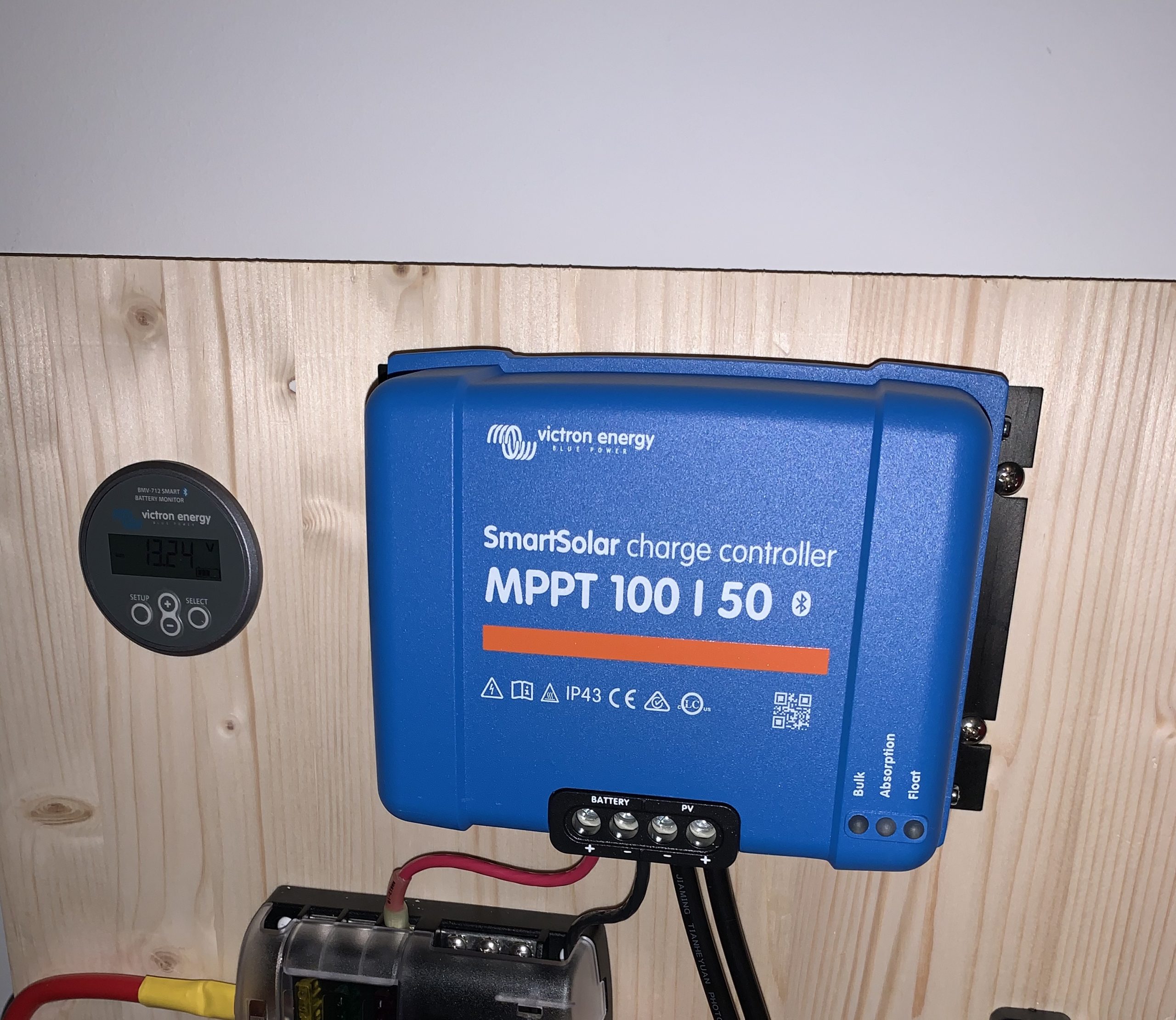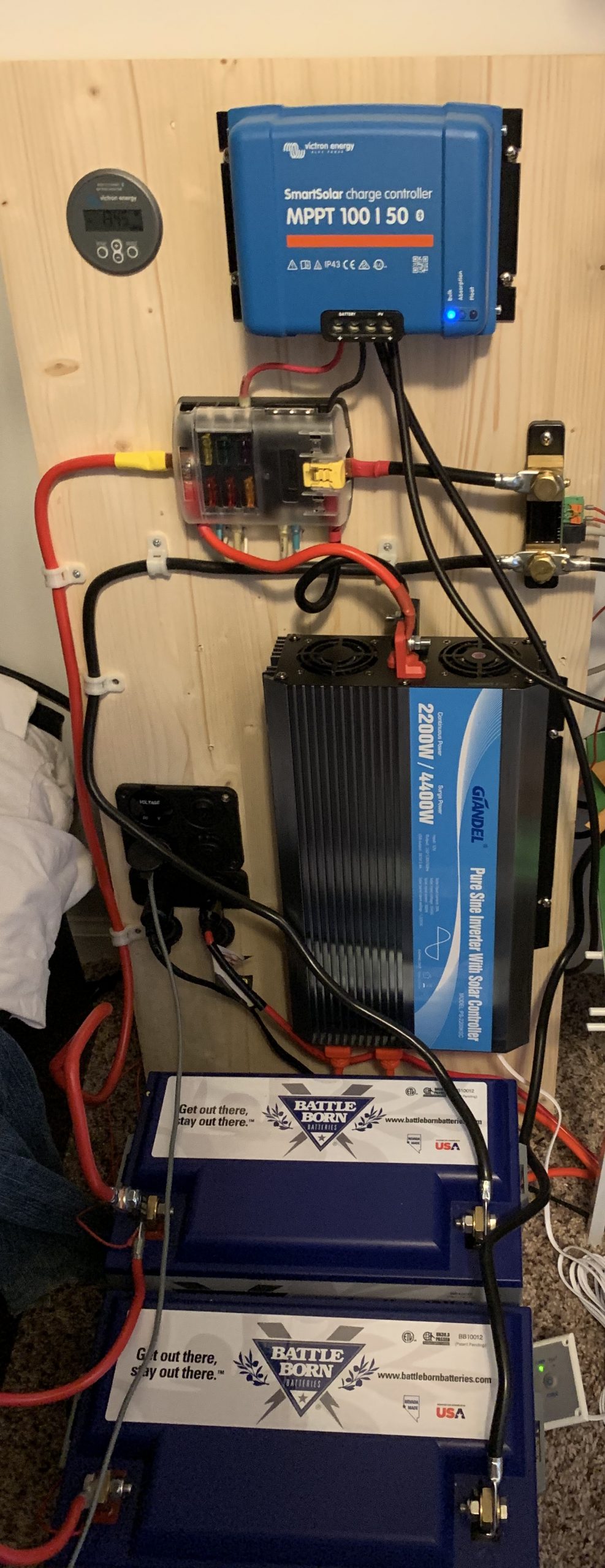
4 – Renogy 100 watt SolarPanels
I finally got my last 2 solar panels for my array and got them mounted up and now I can produce a whopping 12volts at around 22 amps. That equals a production of about 264 watts. In English that means my batteries will charge up and top off pretty darn fast.
Yesterday was a nice sunny day and I have never produced energy before 7:30 or 7:45. Yesterday it started around 7:00. By 9 AM my battery was at 13.6 volts which is actually the full operating charge. Before noon sometime I had maxed and was on Float voltage. And by “before noon”, I probably mean 10 or 11 because I wasn’t around to check it.
I did have a “Whoops” moment in the design. When selecting a charge controller you take the number of watts divided by the number of volts to select how high a current regulator you need.
400 watts / 12 volts = 33.333 AMPS. My charge controller was a 30 amp charger. Now it probably was fine because in solar there are losses. Panels rated at 400 watts don’t really put out 400 watts. Current loads of a promised 5.5 amps per panels never actually get that high. Power is lost in long wiring. Components have efficiency losses and so on and so forth. Also I have not seen any condition where my system or batteries are pulling anything close to 30 amps.
HOWEVER, this is ELECTRICITY in my HOUSE. Having an attitude of “oh this is probably okay” is what house fires are made of. If the rating is 33.3 amps and you have a 30 amp charge controller ……….well, do the math.
So I swapped in a 50 amp charge controller.

Victron 100 volt, 50 amp Solar Charge Controller
So now I don’t need to worry about any theoretical math problems.
In all seriousness, if you play around with Solar power you should strive in all things to keep it safe. Building a system where tolerances are close to the edge is a dangerous game.
Always make sure your wiring and wiring size is to electrical code and even then make sure things are not getting warm. Warm is bad.
So here’s the latest iteration of my system:

Upgraded with 2200 watt inverter
It looks a lot more busy than it is. I have an iPhone charging cable and a micro USB charging cable just hanging into space. I have two orange extension cords running into the next room. I placed some items that are infrequently used on a different power strip than the things I use a bit more often. The TV, Alexa, laptop charger, and lamp are on one strip and my ham radios and powered antennas are on the other strip, among a few other things. I have a portable refrigerator for drinks in the room and I have a 12 volt fan as well.
I declare this project to be a total success. In the evenings when I retire to my bedroom almost everything I do is done on items powered by solar. Translation: I lay in bed in watch TV with a small lamp. Or listen to shortwave radio. In the morning when I wake up I still have a high charge on the battery, usually in the 85% remaining range.
Translation: If there is no sun for 3 or so days……….I can still do all my stuff. In a power outage I am still watching TV, listening to the radio, or reading by LED light. I have a small ceramic heater which probably will gobble power, however I guess I could get a low current drawing electric blanket or something.
Also because I now have some overhead in the Charge Controller Amperage rating I can add more panels and I can always add another battery or two. At this point I don’t think either thing is necessary.
The last thing I may try is my kitchen refrigerator is just behind the closet wall. If I were to go through the wall and make another outlet next to the refrigerator I probably produce enough electricity to power that fridge as well. However the math seems to suggest I’d need some more batteries to pull that off. Probably not economically feasible. I would have to make do with the small portable refrigerator I have now.
After the last round of upgrades my system currently is configured like this:
- 400 watts of solar panels
- Victron MPPT Charge Controller 100 volt 50 amp
- Victron BMV-712 Smart Battery Monitor
- 6 position fuse block
- 2200 watt pure sign wave inverter
- Several 12 volt cigarette lighter style output ports
- USB outlets for charging phones, tablets, etc. (same as above)
- 2 – 100 amp hour Lithium BattleBorn Batteries (LiFePO4)
Here’s a tour of my system as it sits right at this moment. (2000 watt inverter not yet installed).
Anyway this has been fun. I’ve learned a LOT and although I’ve spent a few bucks, I should see at least some reduction in my power bill every month.
